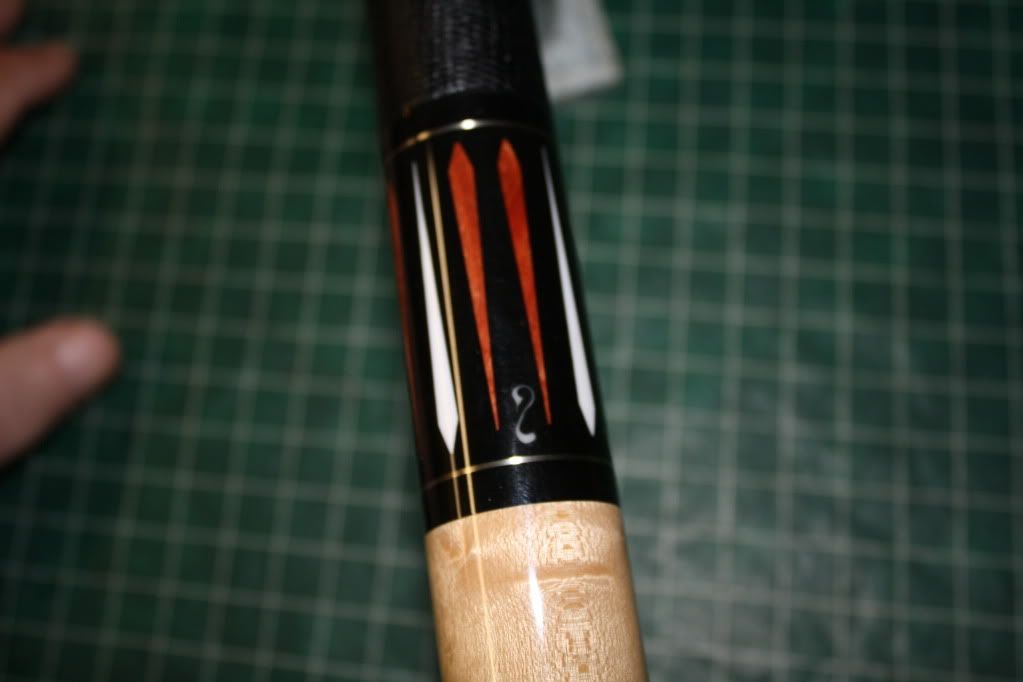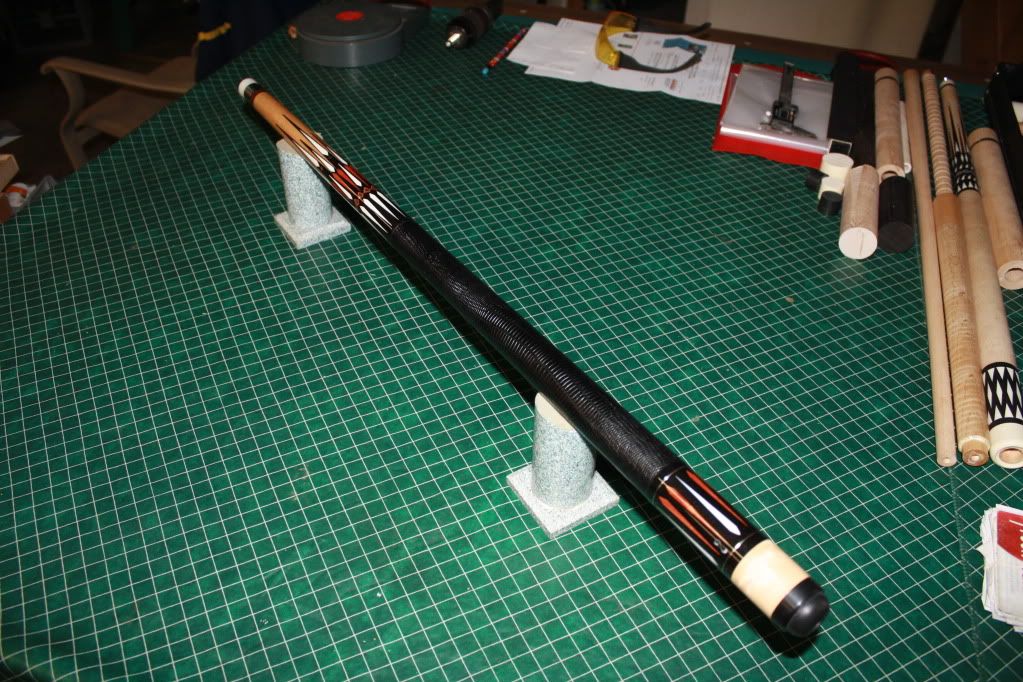Has anyone tried doing inlays with real granite? My friend really wants some (we are granite fabricators) but we are unsure of if it can be done. If it was machined close, could epoxy/lacquer/clear be used to make it flush? Keep in mind that different color granites are completely different animals, I would think he would want to use a really stable color like absolute black. Thanks!
You are using an out of date browser. It may not display this or other websites correctly.
You should upgrade or use an alternative browser.
You should upgrade or use an alternative browser.
Granite inlays
- Thread starter jgobigred
- Start date
Has anyone tried doing inlays with real granite? My friend really wants some (we are granite fabricators) but we are unsure of if it can be done. If it was machined close, could epoxy/lacquer/clear be used to make it flush? Keep in mind that different color granites are completely different animals, I would think he would want to use a really stable color like absolute black. Thanks!
Samsara long ago perfected the techniques for cutting and inlaying natural stone inlays in their cues. The entire process is proprietary and secret, but I can tell you it requires a good deal of diamond tooling.
I'm guessing you, or someone you know has access to granite/marble cutting equipment for counter-top and floor surfaces. That might be fine for male inlays, but you'll still have to find a way to finish grind them flush to the surface. Setting them "below grade" and filling the cavity with some kind epoxy (or polyester) resin will almost certainly fail over time.
I personally have doubts about the finished look, and you're almost certainly going to have weight issues to deal with. One way to test the idea might be to buy some Corian scraps - many types look remarkably like real stone - and see what the finished inlays look like. I predict they'll look "clunky", but your taste may run differently from mine.
About a decade ago Joe Porper perfected a process for inlaying thin, interesting materials below grade, and then inlaying clear acrylic plastic (solid) over the top of that. The results were very interesting, but seems to lack the sort of look one would want in a high-end cue. If you're building cheap ones it might be fine, and Joe would probably share some of his ideas if you asked him.
TW
How about soapstone?
I believe soapstone can be cut easily using just carbide, though burrs (rather than endmills) might be a better choice.
TW
Has anyone tried doing inlays with real granite? My friend really wants some (we are granite fabricators) but we are unsure of if it can be done. If it was machined close, could epoxy/lacquer/clear be used to make it flush? Keep in mind that different color granites are completely different animals, I would think he would want to use a really stable color like absolute black. Thanks!
Hi,
Cue Pantograph Artist and Designer Stew Mortson did some interesting inlay work with some very hard material.
All of the white inlays in this cue shown below were made of Ceramic tile material that was used for the the re entry heat shield on the Gemini Space Capsules. Stew's friend worked at The Jet Propulsion Lab in California in the day and the pieces he got were garbaged picked dumpster scrap.
This material is harder than granite. I believe Stew made his own special tooling to cut inlays but it still had of plenty in broken tools.
BTW, Stew turned down an offer for $ 20,000.00 for this cue. He told the rich dude, $ 25,000.00 if you want to play, the guy countered at 20,000.00 and Stew said to him, if you can't pay the 25 Grand you can't afford the ownership of this cue.
Rick G
Stew made several cues using the inlay shapes seen here. He made a ton of parts in the day and put them in a box. Stew named all of his cues and in 1986 when Jack Nicklaus won his 6th Master's Title, Stew built this cue shown below and it is known as "The Nicklaus Cue" ever since. This cue is one of the 11 cues Stew still owns and it is in perfect condition 25 years later.
All white parts are Space Tile Ceramic used with pink ivory, silver, & ebony built on a P2 3 Big Mill Panto.
"The Nicklaus Cue" a 12 Pointer

Stew's distintive moniker "the backward s figure" inlayed in silver.


Stew (left) today at 88 years young and still showing his passion for cues. Some of his cues is the foreground.

Last edited:
Hi,
You can get some reconstitute material or Corian to give you the effect you are looking to achieve without the machining headaches.
In the final analysis, it is a look that you want to achieve.
Good Luck,
Rick
You can get some reconstitute material or Corian to give you the effect you are looking to achieve without the machining headaches.
In the final analysis, it is a look that you want to achieve.
Good Luck,
Rick
Ray Schuler gave me a tour of his shop on a couple of occasions. He showed me a chunk of granite that they used for inlays. (It is my understanding that most of his fancier stuff went overseas.) I am guessing that was around when Stew was there. Noel Mendoza may also be able to shed some light on the subject, though I don't know what his duties were while at Ray's shop.
Hi Paul,
The material was reconstitute material from Masecraft.
Stew also said they used a lot of Corian and also he and Bruce Allen never milled any real stone here in Palatine.
Noel was with Ray for many years and is a very talented and experienced CM. He is building his own cues today in my local area.
Stew likes to point out that you can put 100 pool players in a room and ask them, who makes the best pool cue. You will get many different responses. If you do the same with Billiards players, 90% will say Schuler, this includes Raymond Ceulemans and many other world champions.
Ray Schuler took 3C shaft tapers to a very high level of engineering recognized world wide.
Rick
The material was reconstitute material from Masecraft.
Stew also said they used a lot of Corian and also he and Bruce Allen never milled any real stone here in Palatine.
Noel was with Ray for many years and is a very talented and experienced CM. He is building his own cues today in my local area.
Stew likes to point out that you can put 100 pool players in a room and ask them, who makes the best pool cue. You will get many different responses. If you do the same with Billiards players, 90% will say Schuler, this includes Raymond Ceulemans and many other world champions.
Ray Schuler took 3C shaft tapers to a very high level of engineering recognized world wide.
Rick
Last edited:
Ray was on Wolf Rd. in Wheeling when I visited the first time. The chunk I'm talking about looked like it just fell off the mountain. It only had one flat spot on it. Ray said it was granite. He seemed pretty proud of that. This would have been late 1990, since I just purchased my first Schuler from Owen's Games and Things in September.
Last edited:
Ray was on Wolf Rd. in Wheeling when I visited the first time. The chunk I'm talking about looked like it just fell off the mountain. It only had one flat spot on it. Ray said it was granite. He seemed pretty proud of that. This would have been late 1990, since I just purchased my first Schuler from Owen's Games and Things in September.
Paul,
Stew was not at the Wheeling or Arlington Hts. shops. I stand corrected maybe they were putting rock in cues at that time.
Rick
Like said above Joe Porper made 6 cues with real stone inlays in them about 12 years ago where he inlaid the stone and it appears there is a clear acrylic or plastic inlay over that to bring it flush with the rest of the cue. I have one of those cues that was my fathers. The inlay work is amazing and looks incredible. I think it looks pretty high end but to each his own. Here's a link to a thread with pics of the cue and an explanation from TATE about the cue.
http://forums.azbilliards.com/showthread.php?t=244200
It's kinda hard to tell but the stone is set lower then the face of the cue, I don't know how you would grind and finish sand it flush so I assume this would be the best way to go about it. Post some pics if you ever get something like that made I'd love to see it.
http://forums.azbilliards.com/showthread.php?t=244200
It's kinda hard to tell but the stone is set lower then the face of the cue, I don't know how you would grind and finish sand it flush so I assume this would be the best way to go about it. Post some pics if you ever get something like that made I'd love to see it.